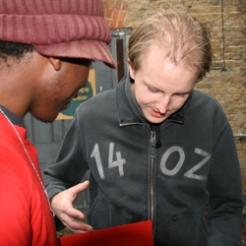Donors recruited to charities by face-to-face fundraisers both on the street and on the door are sticking with their donations for longer, according to new figures.
Attrition on both doorstep and street-recruited donors has dropped to its lowest point since before the recession; “indisputable evidence”, according to Morag Fleming, co-author of the Donor Attrition and Retention Survey (DARS), “that the recession was the major factor influencing increased attrition”.
DARS, which was released at Tuesday’s annual general meeting of the Public Fundraising Regulatory Association (PFRA), found that street fundraising attrition after the first year following the initial donation dropped to below 50 per cent for donors who signed up in 2009. Only 44.2 per cent of donors signed up in 2009 had stopped donating a year later, compared to 53.5 per cent of those signed up in 2008. Fleming and fellow DARS author Rupert Tappin say there are signs that this upward trend is continuing; the first-year attrition figures for donors signing up in the first months of 2010 show an even better picture than 2009.
Doorstep attrition, meanwhile, fell to 37.2 per cent in 2009, down from a high in 2008 of 43.4 per cent of donors dropping off before the first anniversary of their giving.
The survey also found that donors giving smaller initial gifts are more likely to stick around than those giving larger ones, who have a higher attrition rate. Older donors are also more loyal than younger ones, although less likely to sign up via a face-to-face fundraiser.
And the slump in 2008 and 2007 for first year attrition has not translated to long-term poor retention, the survey found, with third-year attrition levels for these donors similar to those recruited in more robust years.
“Irrespective of initial levels of attrition,” said Tappin, “Once donors have stayed with a charity for three years they appear to exhibit similar and predictable degrees of loyalty. High attrition levels in the early stages don’t mean that attrition will run away off the scale for the next five years.”
The results are based on attrition statistics from 27 charities, a third of the PFRA membership, which is the same number as who participated in last year’s DARS.
Face-to-face attrition drops back below pre-recession levels
23 Jun 2011
News
Donors recruited to charities by face-to-face fundraisers both on the street and on the door are sticking with their donations for longer, according to new figures.









